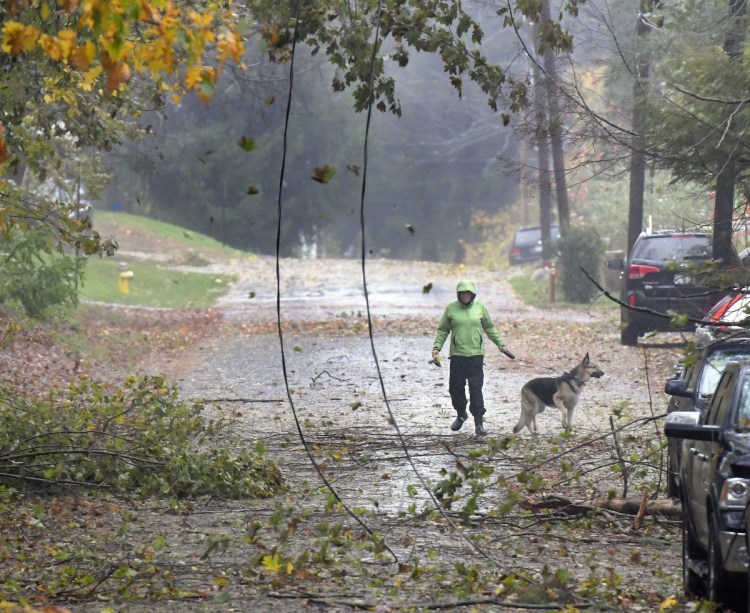Nine months ago, a powerful wind and rainstorm slammed into Maine, flattening trees and knocking out power to about a half-million people.
In the days and weeks that followed, emergency workers labored to clear roads and check on people stranded by the storm, and line crews from around the eastern United States and Canada replaced broken utility poles and got electricity hooked up again to the estimated 500,000 without power, some for as long as 10 days.
CMP said damage to its infrastructure alone cost about $69 million.
Cities and towns are still working through the aftermath of the storm – only now it’s to complete the paperwork and documentation required by the U.S. Federal Emergency Management Agency for reimbursement.
In Pittston, which held a special town meeting following the storm to authorize selectmen to spend about $20,000 on cleanup, town officials are nearing the end of their paperwork.
“We’re not complete, but we’re getting there,” said Debra MacInnes, administrative secretary to the Board of Selectmen. “Half of it has already been submitted to the committee that reviews it.”
Based on preliminary damage assessments, FEMA made its Major Disaster Declaration on Jan. 2 for all but Androscoggin, Aroostook and Washington counties.
Since then, state and municipal officials have been tasked with gathering information for claims to be processed.
A call to FEMA Friday was not immediately returned. The Maine Emergency Management Agency, which is the recipient of the disaster funds, has tasked a public assistance officer to work with FEMA to process claims, MEMA spokeswoman Susan Faloon said Friday.
“All the towns that have put in for (FEMA funds) have had at least three meetings,” Kennebec County Emergency Management Agency Director Sean Goodwin said. “As far as I know, it’s moving along. The paperwork is quite a burden, but FEMA is good about giving guidance.”
Pittston town officials are getting more information from the fire department to submit for review. If some or all of the funds are reimbursed, Selectman Gregory Lumbert said it’s likely to go either into Pittston’s surplus or general fund.
Goodwin said several communities in Kennebec County declined to apply for the funds, including Kennebec County government.
“We had damage to some buildings, but insurance covered it, so the county didn’t apply for funds,” Goodwin said.
When he checked Thursday, Augusta officials were close to signing their paperwork, as were Oakland officials.
Among the communities not seeking federal funds are Randolph and Waterville, he said, and even that required a little paperwork to opt out.
Even today, the damage the unprecedented storm caused is still evident. In wooded areas, trees still lie where they fell, some broken in half and some tipped over with roots sticking up in the air.
On Swan Island, in the Kennebec River between Richmond and Dresden, logging trucks are still coming off the island by barge.
The island, part of the Steve Powell Wildlife Management Area, suffered a major blow-down in the storm.
John Pratte, wildlife biologist for the state Department of Inland Fisheries & Wildlife and Swan Island manager, estimated in April that as much as 1 million board feet of wood would be removed from about 120 acres of the island.
Jessica Lowell can be contacted at 621-5632 or at:
jlowell@centralmaine.com
Twitter: JLowellKJ
Send questions/comments to the editors.



Success. Please wait for the page to reload. If the page does not reload within 5 seconds, please refresh the page.
Enter your email and password to access comments.
Hi, to comment on stories you must . This profile is in addition to your subscription and website login.
Already have a commenting profile? .
Invalid username/password.
Please check your email to confirm and complete your registration.
Only subscribers are eligible to post comments. Please subscribe or login first for digital access. Here’s why.
Use the form below to reset your password. When you've submitted your account email, we will send an email with a reset code.